Related Research Articles

Leonard Michael Maltin is an American film critic and film historian, as well as an author of several mainstream books on cinema, focusing on nostalgic, celebratory narratives. He is perhaps best known for his book of film capsule reviews, Leonard Maltin's Movie Guide, published annually from 1969 to 2014.

Turner Classic Movies (TCM) is an American movie-oriented pay-TV network owned by Warner Bros. Discovery. Launched in 1994, Turner Classic Movies is headquartered at Turner's Techwood broadcasting campus in the Midtown business district of Atlanta, Georgia.
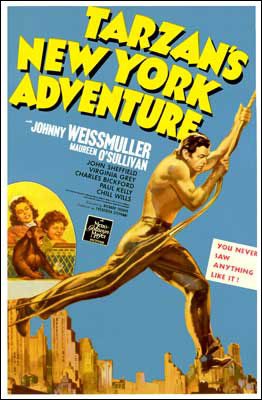
Tarzan's New York Adventure is a 1942 black-and-white adventure film from Metro Goldwyn Mayer, produced by Frederick Stephani, directed by Richard Thorpe, that stars Johnny Weissmuller and Maureen O'Sullivan. This was the sixth and final film in MGM's Tarzan series and was the studio's last Tarzan feature until 1957's Tarzan and the Lost Safari. Although Tarzan's New York Adventure includes scenes set in New York, as well as the customary jungle sequences, it is yet another Tarzan production primarily shot on MGM's back lots.
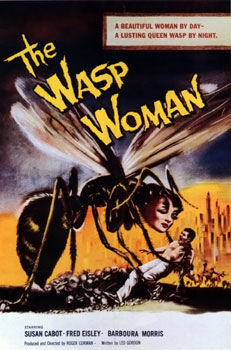
The Wasp Woman is a 1959 American independent science-fiction horror film produced and directed by Roger Corman. Filmed in black-and-white, it stars Susan Cabot, Anthony Eisley, Michael Mark, and Barboura Morris. The film was originally released by Filmgroup as a double feature with Beast from Haunted Cave. To pad out the film's running time when it was released to television two years later, a new prologue was added by director Jack Hill.

The Giant Claw is a 1957 American monster film from Columbia Pictures, produced by Sam Katzman, directed by Fred F. Sears, that stars Jeff Morrow and Mara Corday. Both Sears and Katzman were well known as low-budget B film genre filmmakers. The film was released as a double feature with The Night the World Exploded.

The Night the World Exploded is a 1957 science fiction, disaster film. The film was written by Jack Natteford and Luci Ward, and directed by Fred F. Sears for producer Sam Katzman. Both Katzman and Sears were great exponents of the low-budget B film genre. The film was theatrically released on a double bill with The Giant Claw.
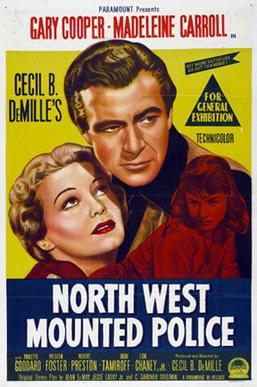
North West Mounted Police is a 1940 American epic-western film produced and directed by Cecil B. DeMille and starring Gary Cooper and Madeleine Carroll. Written by Alan Le May, Jesse Lasky Jr., and C. Gardner Sullivan, and based on the 1938 novel The Royal Canadian Mounted Police by R. C. Fetherstonhaugh, the film is about a Texas Ranger who joins forces with the North-West Mounted Police to put down a rebellion in the north-west prairies of Canada. The supporting cast features Paulette Goddard, Preston Foster, Robert Preston, Akim Tamiroff, Lon Chaney Jr. and George Bancroft. Regis Toomey, Richard Denning, Rod Cameron, and Robert Ryan make brief appearances in the film playing small roles.

Busman's Honeymoon is a 1940 British detective film directed by Arthur B. Woods. An adaptation of the 1937 Lord Peter Wimsey novel Busman's Honeymoon by Dorothy L. Sayers, Busman's Honeymoon stars Robert Montgomery, Constance Cummings, Leslie Banks, Googie Withers, Robert Newton and Seymour Hicks as Mervyn Bunter.

Sundown is a 1941 American black-and-white World War II film starring Gene Tierney, Bruce Cabot and George Sanders. It was directed by Henry Hathaway, produced by Jack Moss and Walter Wanger, written by Charles G. Booth and Barré Lyndon, and released by United Artists. Set in British East Africa, the film's adventure story was well received by critics, earning three Academy Award nominations, but it was a failure at the box office.
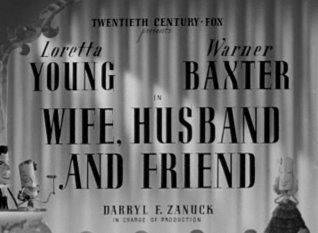
Wife, Husband and Friend is a 1939 American comedy film directed by Gregory Ratoff and starring Loretta Young, Warner Baxter and Binnie Barnes in the three title roles, respectively. The film, based on a script by Nunnally Johnson, tells the story of a contractor and his wife, and how their musical ambitions result in marital tensions and a romantic triangle with a professional singer. The film was remade as Everybody Does It (1949), starring Paul Douglas as the contractor, Celeste Holm as his wife, and Linda Darnell as the singer.

Challenge to Be Free is an anti-hero film directed by Tay Garnett and starring Mike Mazurki. The film's plot was a loosely based on the 1931 Royal Canadian Mounted Police (RCMP) pursuit of a trapper named Albert Johnson, the reputed "Mad Trapper of Rat River". The film was shot and originally released in 1972 with the title Mad Trapper of the Yukon; it was re-released in 1975 as Challenge to Be Free.

Huckleberry Finn (1931) is an American pre-Code comedy film directed by Norman Taurog and starring Jackie Coogan as Tom Sawyer and Junior Durkin as Huckleberry Finn. The picture was based upon the 1884 novel The Adventures of Huckleberry Finn by Mark Twain.
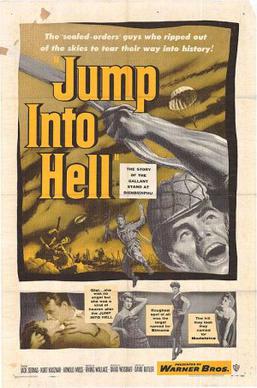
Jump into Hell is a 1955 war film directed by David Butler. The film stars Jacques Sernas and Kurt Kasznar. As the first Hollywood film based on the war in French Indochina, the story is a fictionalized account of the Battle of Dien Bien Phu.
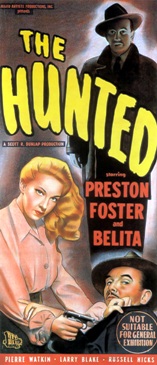
The Hunted is a 1948 American film noir crime film starring Preston Foster, Belita, Pierre Watkin and Edna Holland. It was directed by Jack Bernhard.

Phantom Raiders is a 1940 film, the second in the series starring Walter Pidgeon as detective Nick Carter. The film was part of a movie trilogy based on original stories featuring the character from the long-running Nick Carter, Detective literary series. In the heightened tensions prior to World War II, Hollywood produced many films in the spy film genre such as Phantom Raiders.

The Second Face is a 1950 romantic drama film directed by Jack Bernhard and starring Ella Raines as a plain woman whose life is drastically changed by plastic surgery.

Riders of the Deadline is a 1943 American Western film directed by Lesley Selander and written by Bennett Cohen. The film stars William Boyd, Andy Clyde, Jimmy Rogers, Frances Woodward, Robert Mitchum, Richard Crane, Anthony Warde and William Halligan. The film was released on December 3, 1943, by United Artists.

Texas Masquerade is a 1944 American Western film directed by George Archainbaud, written by Jack Lait Jr. and Norman Houston, and starring William Boyd, Andy Clyde, Jimmy Rogers, Don Costello, Mady Correll and Francis McDonald. It was released on February 8, 1944, by United Artists.
The Conquering Horde is a 1931 American pre-Code Western directed by Edward Sloman and written by Emerson Hough, Grover Jones and William Slavens McNutt. The film stars Richard Arlen, Fay Wray, Claude Gillingwater, Ian Maclaren, Frank Rice, Arthur Stone and George Mendoza. The film was released on January 31, 1931, by Paramount Pictures. It was a remake of North of 36 (1924).
Behind The Mask is a 1946 American comedy-mystery film directed by Phil Karlson and starring Kane Richmond and Barbara Read. It was the second in a series of three films released by Monogram in 1946 starring Richmond as the crimefighter The Shadow, the others being The Shadow Returns and The Missing Lady.
References
- 1 2 3 The Eddie Mannix Ledger, Los Angeles: Margaret Herrick Library, Center for Motion Picture Study.
- ↑ Leonard Maltin: Turner Classic Movies (www.tcm.com)
- ↑ Jensen, Larry (2018). Hollywood's Railroads: Sierra Railroad. Vol. Two. Sequim, Washington: Cochetopa Press. p. 21. ISBN 9780692064726.
- ↑ Leonard Maltin: Turner Classic Movies www.tcm.com